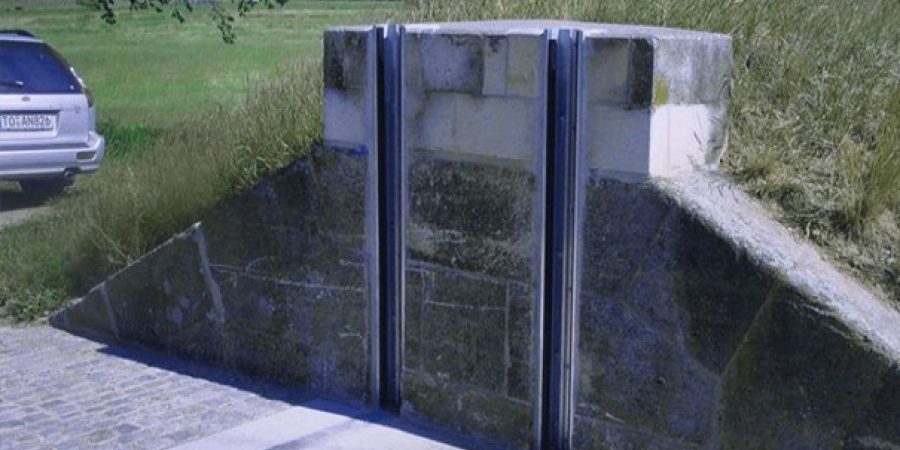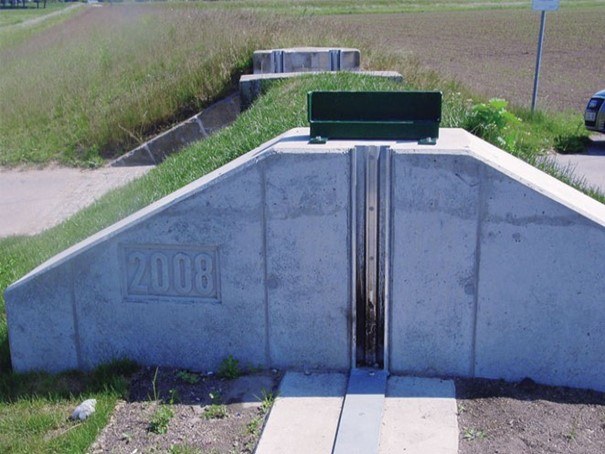PROTECTING VALUABLE HISTORY WITH TERRA STOP LOG SYSTEM.
Oppitzsch, a district in Strehla, a town with a 1000-year history and buildings dating from the Middle Ages, lies on a bend in the Elbe. In the past, this district was very important because this was where the main eastwest road crossed the River Elbe. But the town and its surroundings have always been battling against the changing forces of the river’s floodwaters.
In a major project here in the hinterland of the Elbe, a combination of a new earth embankment and strengthening of the protective measures by means of demountable stop log elements has been realised. Twelve aluminium stop log elements were produced for a double dyke opening with a clear opening of 3.60 meters and a water retention level of 1.24 meters. They are supported by posts cast into reinforced concrete piers. In the event of flooding, the flood defences with a protective height of 0.80 meters are closed off with 14 separate stop log closures up to the intended flood protection height over a total length of 55 meters.
Four aluminium stop log elements, which are supported in the reinforced concrete piers, are provided for each closure. The distance between the concrete piers is approx. 3.65 meters. All the demountable parts, accessories, erection aids and tools are stored in specially designed pallets in a roll-off container.
Data & Facts


you might also be interested in
-

Just-in-Time Delivery for a Bridge Abutment
A new bridge for overpassing the A3 freeway was built at the Offenbach junction. There were a total of three excavation pits for this new construction.
To the post -

Linear shoring ensures large and safe working space
Zur Sicherung der Baugrube und zur Erstellung des Sammlers verwendet das Unternehmen den gestuften Linearverbau von E+S.
To the post -

Parking Garage Retaining Wall
As part of this construction measure, a retaining wall made of anchored LARSSEN steel sheet pile profiles was provided, as this would have been a...
To the post
